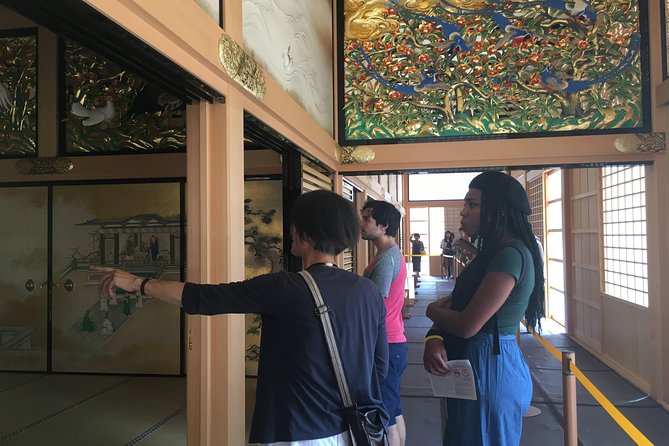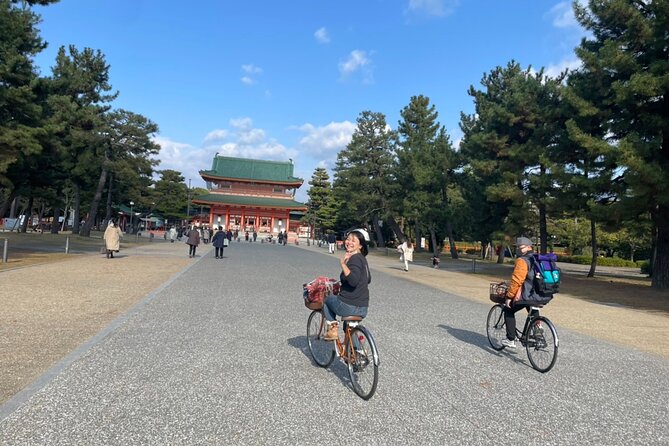Experience the authentic flavors of Japan with a Ramen Cooking Experience. Learn the art of making ramen, gyoza, and delicious side dishes in a personalized and immersive class.
The instructor’s home serves as the perfect setting for this culinary adventure. you will discover the secrets of Umami/Dashi soup stock and receive an apron and utensils.
With convenient access from Musashi-Koganei Station, this highly recommended experience is a must-try for anyone looking to create delicious Japanese dishes at home.
Quick Takeaways

- Carefully select and combine ingredients for flavorful ramen
- Master the art of making homemade noodles from scratch
- Explore delicious side dishes to complement your ramen, such as gyoza and miso soup
- Unlock the secrets of umami soup stock for a well-balanced and flavorful broth
The Art of Making Ramen
The art of making ramen involves carefully selecting and combining ingredients to create a flavorful and satisfying dish. Ramen techniques vary, but the process typically begins with preparing a rich and flavorful broth. This can be done by simmering ingredients like pork bones, chicken, vegetables, and various seasonings for hours. The broth is then strained and seasoned to perfection.
Homemade noodles are another key element of ramen. These noodles are made from a combination of wheat flour, water, and kansui, a type of alkaline mineral water. The dough is kneaded and rolled out, then cut into thin strips. The noodles are cooked until al dente and added to the broth along with various toppings like sliced pork, soft-boiled eggs, and green onions.
The result is a comforting bowl of ramen that’s both delicious and satisfying.
Mastering the Perfect Gyoza

You can master the perfect gyoza by following a few simple steps. To create delicious gyoza, it is important to start with the right fillings. Traditional gyoza fillings typically consist of a combination of ground meat, such as pork or chicken, finely chopped vegetables, and seasonings like ginger, garlic, and soy sauce. Once the filling is prepared, the next step is to fold the gyoza wrappers. The table below provides some tips for folding gyoza:
| Tips for Folding Gyoza |
|---|
| Place a small amount of filling in the center of the wrapper. |
| Moisten the edges of the wrapper with water. |
| Fold the wrapper in half and seal the edges by pressing firmly. |
| Pleat the edges of the wrapper, starting from one end and working your way to the other. |
| Ensure that the gyoza is tightly sealed to prevent the filling from leaking during cooking. |
Exploring Delicious Side Dishes
Exploring the variety of delicious side dishes enhances the ramen cooking experience. When it comes to ramen, there are endless possibilities for side dishes that can complement and elevate the flavors of the dish.
One popular side dish is gyoza, which are dumplings filled with a savory mixture of ground meat and vegetables. These dumplings are typically pan-fried to perfection, creating a crispy exterior and a juicy, flavorful interior.
Another traditional side dish is miso soup, a comforting broth made with fermented soybean paste, tofu, and seaweed. The soup adds depth and richness to the meal.
Plus, a bowl of steamed rice is often served alongside ramen to provide a satisfying and filling component.
Exploring variations of these side dishes, using traditional ingredients, allows for a well-rounded and satisfying ramen cooking experience.
Unveiling the Secrets of Umami Soup Stock
During the cooking class, the instructor frequently emphasizes the importance of using high-quality ingredients to unlock the secrets of the umami soup stock. Exploring different flavors is a key aspect of creating a delicious ramen dish, and the soup stock plays a vital role in achieving that. The table below showcases the ingredients used in making the umami soup stock:
| Ingredients | Quantity |
|---|---|
| Dried kombu | 2 sheets |
| Bonito flakes | 1 cup |
| Water | 4 cups |
| Soy sauce | 2 tbsp |
The dried kombu and bonito flakes are simmered in water to create a flavorful broth. The kombu adds a subtle sweetness, while the bonito flakes contribute a rich umami taste. The addition of soy sauce enhances the depth of flavor. By using high-quality ingredients and following the instructor’s techniques, participants learn how to create a well-balanced and flavorful umami soup stock, elevating their ramen cooking experience.
A Personalized and Authentic Cooking Experience
For a truly personalized and authentic cooking experience, participants have the opportunity to learn from a skilled instructor and cook traditional Japanese dishes in the comfort of their own home.
This cooking class offers a unique chance to take in the art of Japanese cuisine, using traditional cooking techniques passed down through generations. From making homemade ramen noodles to crafting delicious gyoza dumplings, you will learn the secrets behind these beloved dishes.
The class also includes the preparation of two side dishes, miso soup, and rice, providing a well-rounded culinary experience.
Here's some more great Japan experiences nearby that we think you'll like.
Frequently Asked Questions
What Is the Cost of the Ramen Cooking Experience With Gyoza and Other Side Dishes?
The cost of the ramen cooking experience with gyoza and other side dishes is not mentioned in the provided information. Further details are needed to determine the exact cost of the experience.
How Long Does the Cooking Class Typically Last?
The cooking class typically lasts for a few hours, providing ample time for participants to learn various cooking techniques, as well as receive valuable tips and tricks from the instructor.
Can I Bring My Own Ingredients or Utensils to the Cooking Class?
Travelers are not allowed to bring their own ingredients or utensils to the cooking class. All necessary ingredients and utensils are provided, ensuring a hassle-free experience and consistent results for all participants.
Is the Cooking Class Suitable for Vegetarians or Individuals With Dietary Restrictions?
The cooking class offers vegetarian alternatives and dietary accommodation options for individuals with restrictions. They can enjoy the experience while learning to make delicious dishes like ramen and gyoza.
Are There Any Age Restrictions for Participating in the Cooking Class?
Age restrictions are not mentioned for the cooking class. The class duration, however, is not specified. Participants should inquire further or refer to the class details for more information.
The Sum Up
To sum it up, the Ramen Cooking Experience offers participants a unique and immersive opportunity to learn the art of making authentic Japanese ramen and gyoza.
With highly recommended reviews and a convenient meeting point in Tokyo, this personalized cooking class provides all the necessary ingredients and tools for creating delicious Japanese dishes.
Don’t miss out on this chance to explore the secrets of Japanese cuisine and create flavorful meals at home.
Where To Stay In Tokyo
Tokyo visitor levels are currently at an all-time high so make sure to book your hotels early. Tip most hotels booked with booking.com have free cancelation so book as soon as you know your date and you can always cancel if you change your mind.






